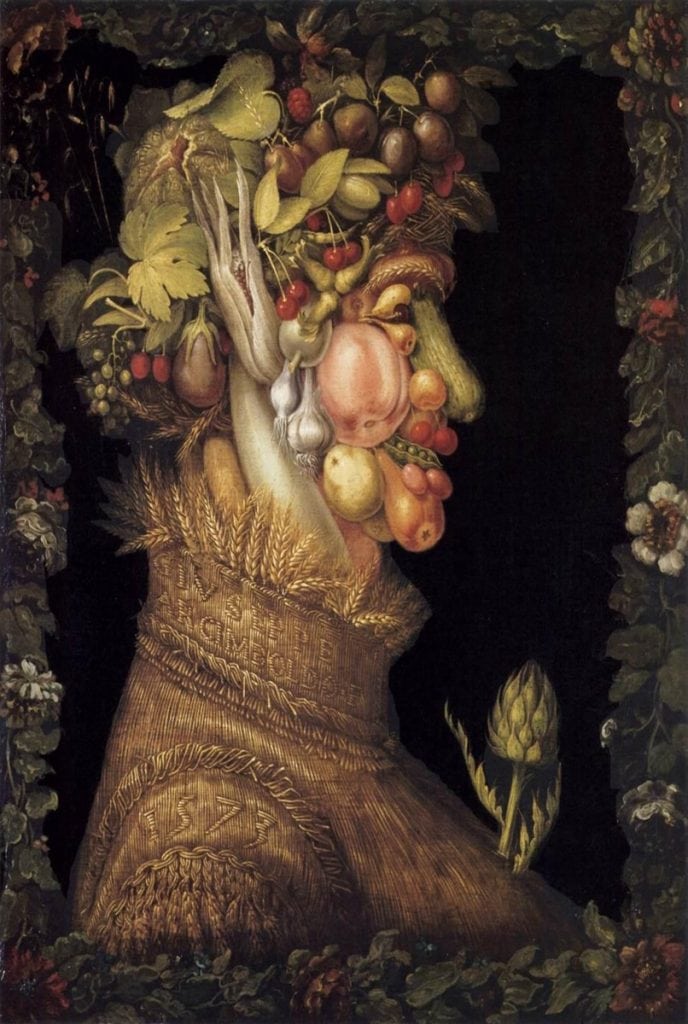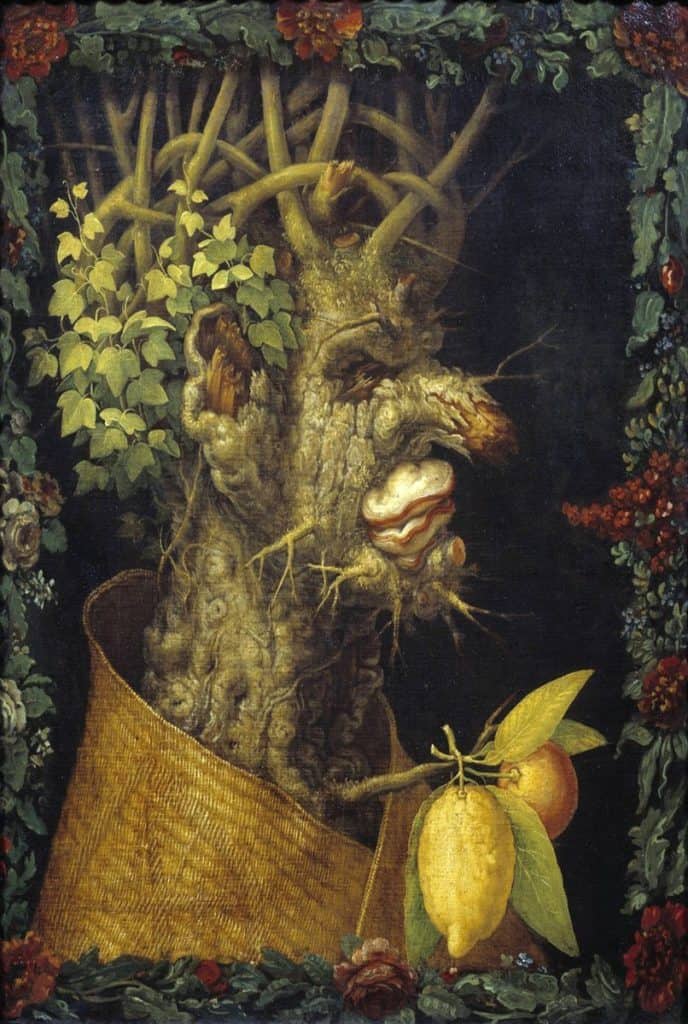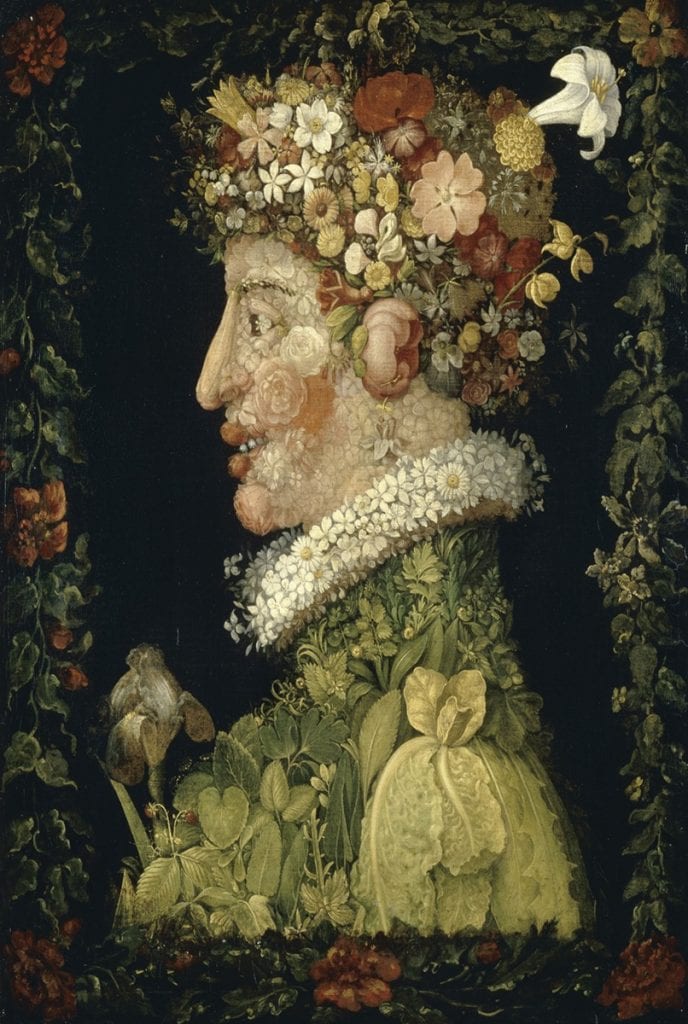In the last few weeks in schools across the country, teachers in the early grades wrote lesson plans for tots and pre-teens about the four seasons. Posters appeared on classroom bulletin boards; songs were sung, and games were played – each with seasonal icons that enabled those young learners to identify a season by one or two easily associated phenomena, like snow in winter.
Spring, Summer, Fall, and Winter, as seasons, have inspired artworks through the centuries that include paintings, sculptures, and prints. And only slightly less in number there are musical compositions, theatre productions, and calendar celebrations.
**

Giuseppe Arcimboldo was an Italian painter born around 1526 in Milan, and he is celebrated for his distinctive and imaginative portraiture that blends vegetation, fruits, and various seasonal elements into images that are strangely human. The artist’s unique method of combining objects to represent the human form exemplifies the Mannerist style that characterized much of Renaissance art.
Arcimboldo’s most famous work is his series of “portraits,” where he constructed human likenesses entirely from inanimate objects. The series is a quintuplative one featuring Vertumnus, the Roman god of the seasons.

In Arcimboldo’s work, “Summer,” the face of a man is ingeniously formed from vegetables like wheat, peas, and grapes, while “Winter” features a figure composed of mushrooms, icicles, and barren branches. These portraits transcend mere visual representation; they are layered with symbolism reflecting the cycles and relationships within nature.
The artist’s early career was rooted in the artistic environment of Milan, where he absorbed the influences of other meaningful artists of the era, including Leonardo da Vinci. Arcimboldo served as a court painter for the Habsburgs, working for Emperor Maximilian II. This connection elevated his status and allowed him to refine his artistic style. Later while working in the courts of Prague and Vienna, his works often served as allegories of seasonal change, the four elements, and various academic themes.
Arcimboldo’s genius lay not only in his imaginative compositions but also in his technical skill. His meticulous attention to detail and adept understanding of color and texture allowed him to create lifelike images that appear strikingly realistic at a distance and become fantastical upon closer inspection. This duality engages viewers and encourages them to explore art in other forms.
**
On another note, Arcimboldo was not without controversy. When the portrait “The Librarian” was released to the public, some scholars, who had a close relationship with the book culture of the time, argued that the portrait ridiculed their scholarship.

“Librarian” belongs to the works executed after his arrival at the Habsburg court in Prague. Like many of his works, this portrait is part of a series meant to be a divertissement depicting members of the Emperor’s entourage. Other “portraits” in this series are “The Lawyer” and “The Chef,” both of which are now in the National Museum in Stockholm.
The person on which “The Librarian” is based is most likely Wolfgang Lazius, a scientist and collector employed by Ferdinand I as his official historian and director of the Kunstkammer (the Royal Art Museum) and the imperial library.
It goes without saying that the Emperor approved and probably enjoyed Arcimboldo’s criticism of rich people’s misbehavior and how he showed others what happened at that time through his art.
In “The Librarian,” although the painting might have appeared ridiculous, there is also a criticism of wealthy people who collect books only to own them, rather than to read them.




Very interesting
Thank you very much for a very interesting article, I liked it a lot.
Thanks for showing this engenious art work.
This is fascinating history. I appreciate you sharing.
Although I’m familiar with such words as “quintuple” and “quintuplets”, I don’t recall seeing “quintuplative” before today.